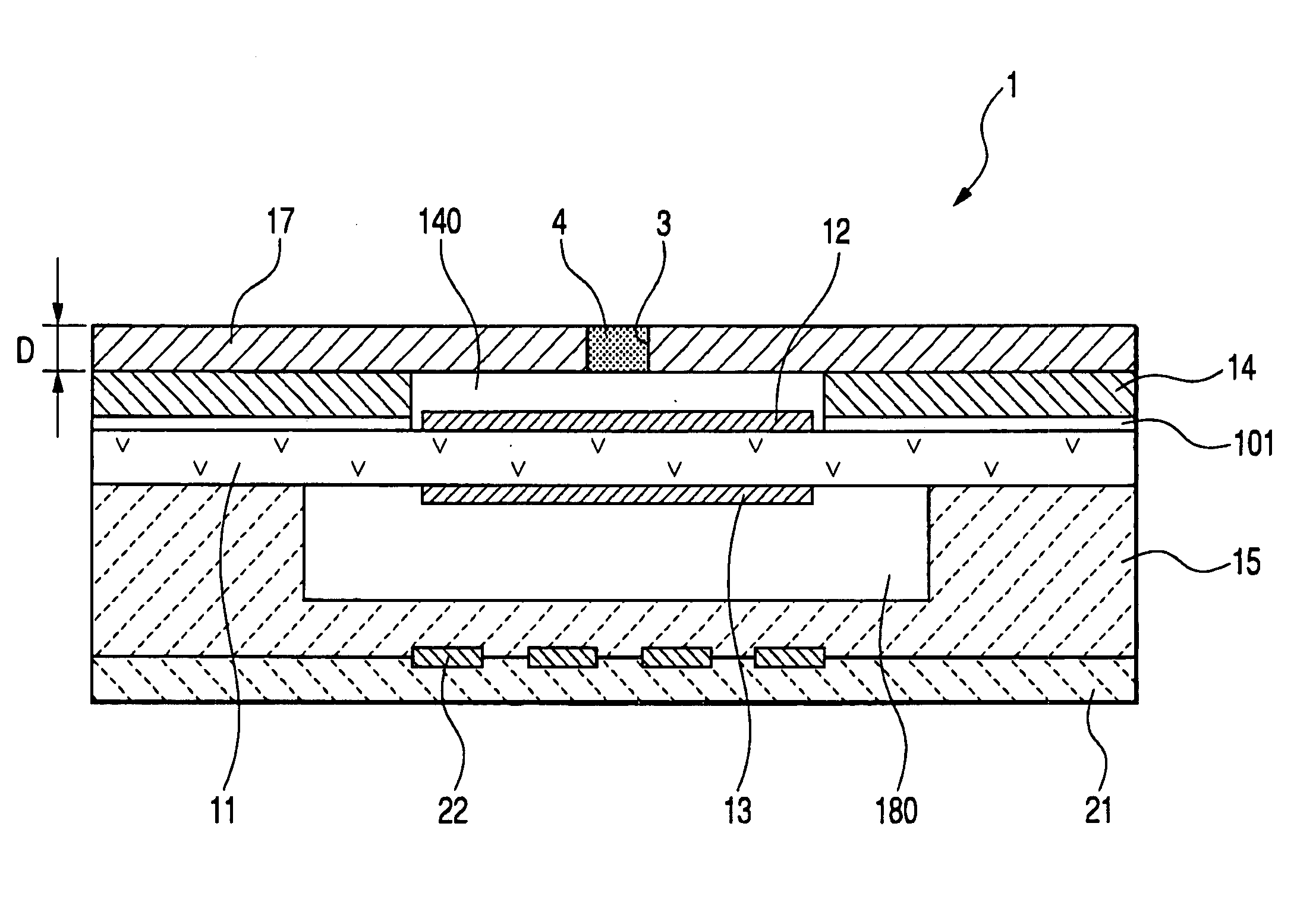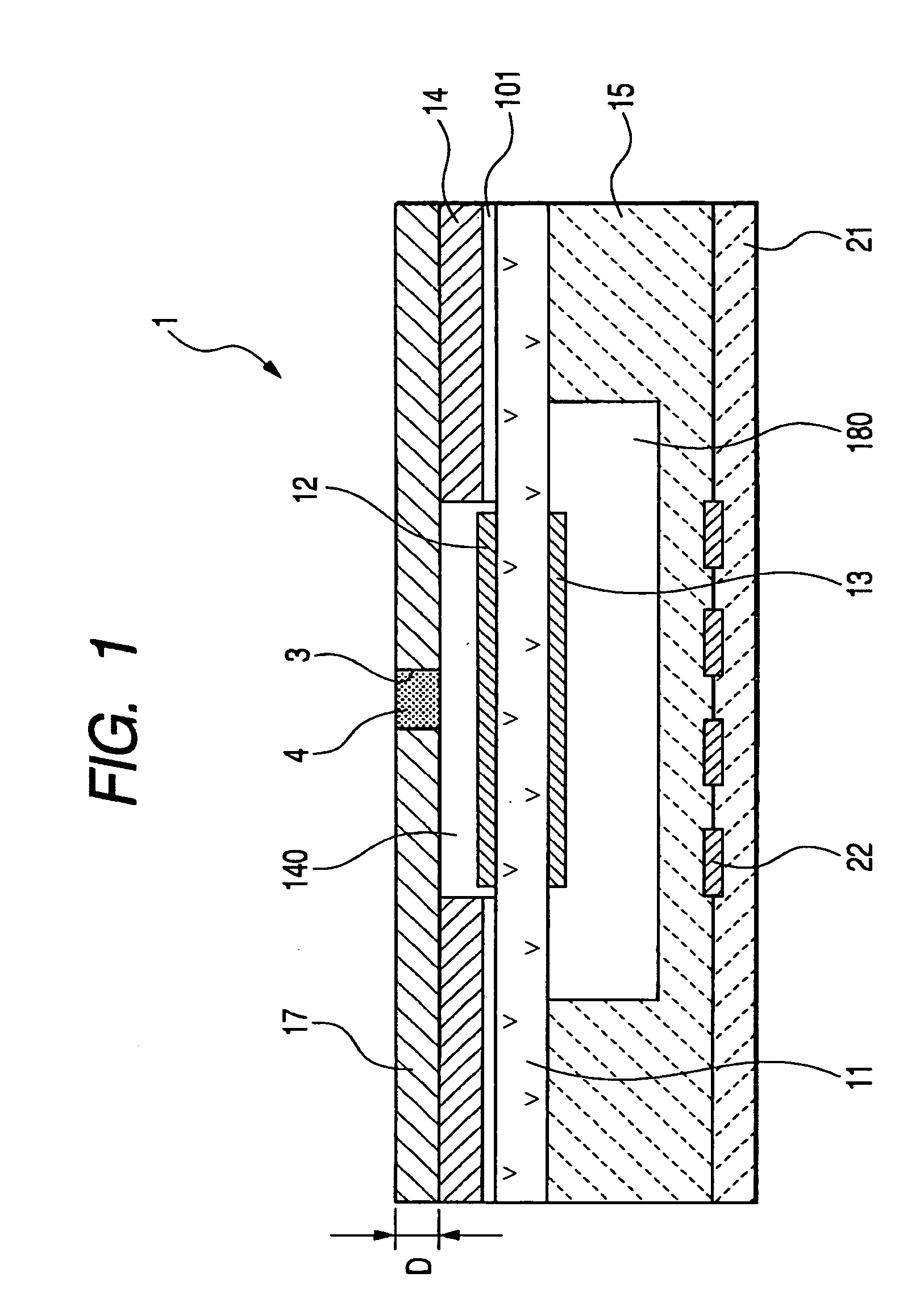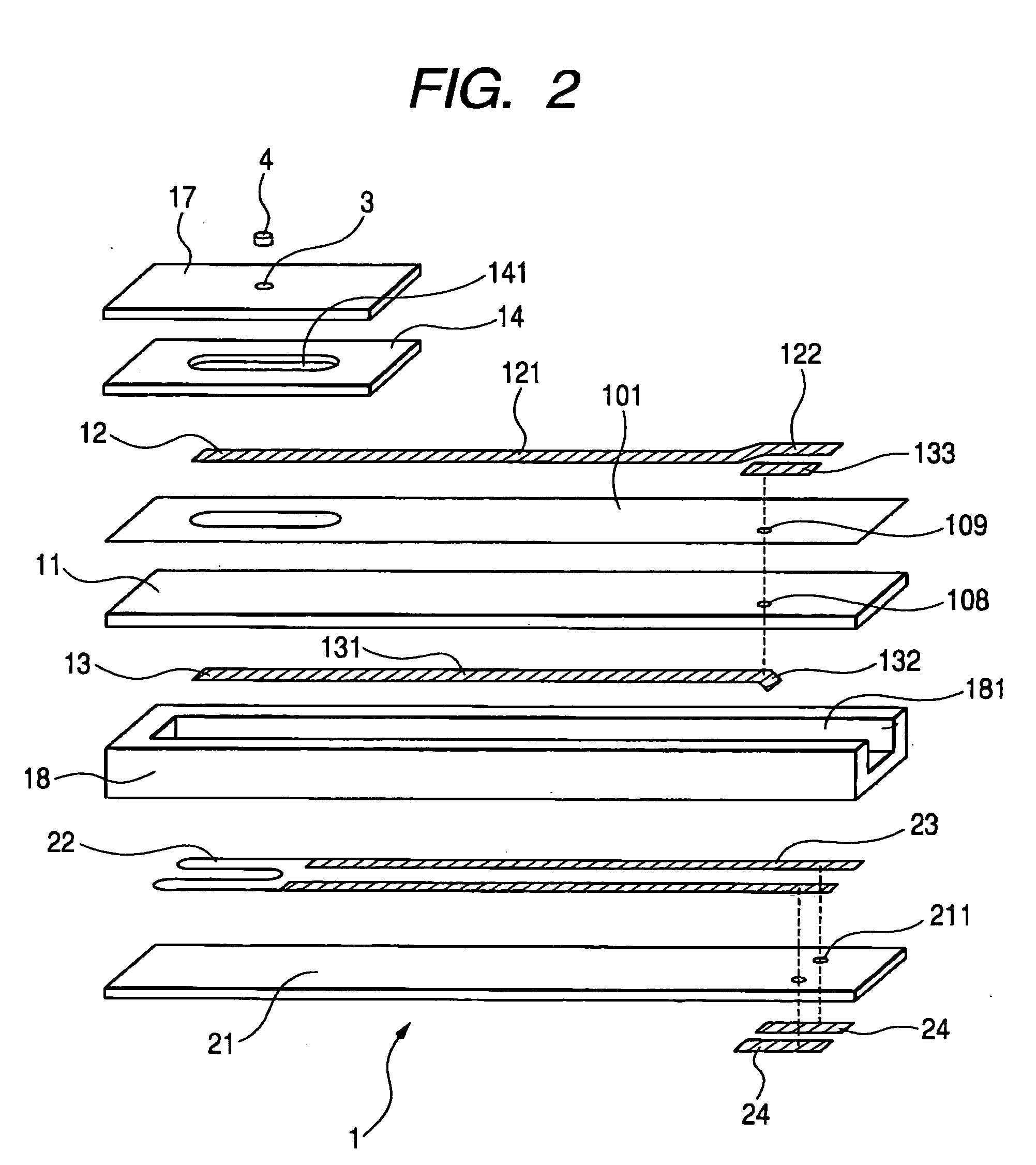Gas sensing element
a technology of gas sensing element and sensor output, which is applied in the direction of measurement devices, material electrochemical variables, instruments, etc., can solve the problems of inability to achieve stable combustion, large amount of nox or other air pollution gases in the exhaust gas discharged from this engine, and less actual state of exhaust gas, so as to reduce or eliminate the rich shift in the sensor output, reduce the diffusion resistance, and prevent water vapor pressure
- Summary
- Abstract
- Description
- Claims
- Application Information
AI Technical Summary
Benefits of technology
Problems solved by technology
Method used
Image
Examples
first embodiment
[0058] A gas sensing element in accordance with a first embodiment of the present invention will be explained with reference to FIGS. 1 to 4. A gas sensing element 1 of this embodiment includes a solid electrolyte body 11 having oxygen ionic conductivity, a measured gas side electrode 12 provided on one surface of solid electrolyte body 11, and a reference gas side electrode 13 provided on the other surface of solid electrolyte body 11. Furthermore, the gas sensing element 1 includes a chamber space 140 in which the measured gas side electrode 12 is positioned. The gas sensing element 1 has an introducing hole 3 connecting the chamber space 140 to a measured gas atmosphere outside of the gas sensing element 1. The introducing hole 3 is filled with the porous member 4 having an average pore diameter equal to or greater than 2 μm. Furthermore, the porous member 4 has the porosity of 30 to 75% by volume.
[0059] The gas sensing element 1, as shown in FIGS. 1 and 2, includes a chamber fo...
second embodiment
[0080] This embodiment is, as shown in FIGS. 5 and 6, characterized in that the gas sensing element 1 of the first embodiment is modified in that the introducing hole 3 has a cross-sectional area changing in accordance with the distance from the chamber space 140. For example, as shown in FIG. 5, it is preferable to form the introducing hole 3 whose cross-sectional area becomes larger when the distance from the chamber space 140 increases. To the contrary, as shown in FIG. 6, it is possible to form the introducing hole 3 whose cross-sectional area becomes smaller when the distance from the chamber space 140 increases.
[0081] Furthermore, according to this embodiment, the overall cross-sectional area T at the narrowest portion of the introducing hole 3, the thickness D of the shielding layer 17, and the area S of the shielding layer 17 facing to the chamber space 140 are in the relationships of 0.005≦T / D2≦0.5 and 1.0×10−5≦T / S≦5.0×10−3. According to this embodiment, as apparent from F...
third embodiment
[0087] This embodiment is, as shown in FIGS. 8 and 9, a gas sensing element 1b characterized in that the introducing hole 3 is formed in the chamber forming layer 14. The introducing hole 3 of this embodiment extends in a direction normal to the axial direction of gas sensing element 1b so as to connect the chamber space 140 to the measured gas atmosphere outside of the gas sensing element 1b.
[0088] More specifically, the introducing hole 3 consists of two slits each extending in the direction normal to the axial direction of gas sensing element 1b from an open portion 141 of the chamber forming layer 14 to the outside of the gas sensing element 1b. Each slit of the introducing hole 3 is filled with the porous member 4. Furthermore, the porous member 4 can be formed before sintering the green sheet of chamber forming layer 14. For example, after the introducing hole 3 is formed in the green sheet of chamber forming layer 14, the introducing hole 3 is filled with the above-described...
PUM
| Property | Measurement | Unit |
|---|---|---|
| pore diameter | aaaaa | aaaaa |
| pore diameter | aaaaa | aaaaa |
| pore diameter | aaaaa | aaaaa |
Abstract
Description
Claims
Application Information
 Login to View More
Login to View More - R&D
- Intellectual Property
- Life Sciences
- Materials
- Tech Scout
- Unparalleled Data Quality
- Higher Quality Content
- 60% Fewer Hallucinations
Browse by: Latest US Patents, China's latest patents, Technical Efficacy Thesaurus, Application Domain, Technology Topic, Popular Technical Reports.
© 2025 PatSnap. All rights reserved.Legal|Privacy policy|Modern Slavery Act Transparency Statement|Sitemap|About US| Contact US: help@patsnap.com



